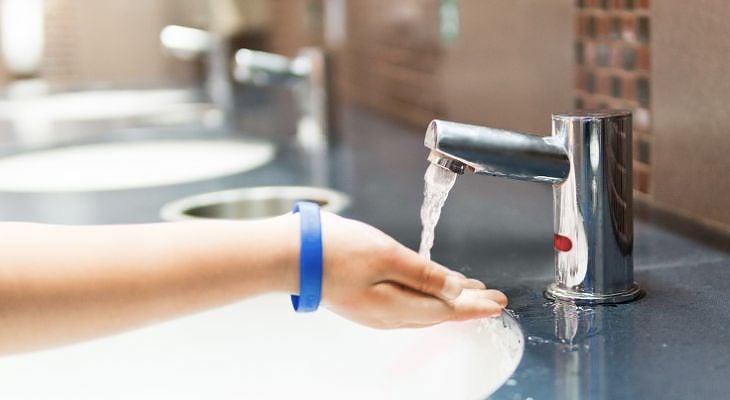In the wake of heightened hygiene awareness—especially since the COVID-19 pandemic—touchless technology has become more popular in both public and private spaces. One such innovation is the touchless faucet, often seen in commercial restrooms, medical facilities, and increasingly, residential kitchens and bathrooms. These faucets operate via infrared sensors or motion detection, allowing water to flow without the user needing to touch any handles.
But a common question arises: Are touchless faucets truly more sanitary than traditional faucets? Let’s break down the facts, potential benefits, drawbacks, and what recent studies and experts say about the sanitary impact of these devices.
The Case for Sanitation: Why Touchless Faucets Seem Cleaner
Touchless faucets were designed primarily to improve hygiene. The idea is straightforward: by eliminating the need to touch faucet handles, you reduce the transmission of bacteria and viruses between users. Here’s why they’re often considered more sanitary:
1. Reduced Surface Contact
Traditional faucets require manual operation. That means when your hands are dirty, you touch the handle—possibly leaving germs behind. Later, when you shut the faucet off after washing, you touch the same handle again, potentially re-contaminating your hands. Touchless faucets eliminate this loop by not requiring physical contact.
2. Lower Cross-Contamination
In public settings like restaurants or hospitals, hundreds of people use the same restroom every day. Each touchpoint, including faucet handles, becomes a hotspot for germs. Touchless technology helps break this chain by reducing shared contact surfaces.
3. Consistency in Handwashing
Some touchless faucets are pre-programmed for optimal water flow time and temperature. This helps encourage proper handwashing behavior and ensures users spend enough time under the water, especially when paired with automated soap dispensers.
The Other Side: Are Touchless Faucets Always More Sanitary?
Despite the benefits, there are caveats that must be considered. Touchless doesn’t always mean germ-free.
1. Sensor Inaccuracy and Malfunctions
Infrared sensors can sometimes misfire. A faucet that doesn’t turn on quickly can lead to frustration or users abandoning proper handwashing. If people can’t reliably get water when they need it, the intended sanitary benefit diminishes.
2. Internal Contamination
Studies have shown that some touchless faucets can harbor more bacterial growth inside their components than manual ones. A 2011 study published in Infection Control and Hospital Epidemiology found that certain touchless models in hospitals were more prone to internal microbial buildup due to their complex mechanical design and water pathways.
This doesn’t necessarily mean all touchless faucets are unsanitary, but it highlights the need for proper design and regular maintenance.
3. Cleaning Neglect
Just because a faucet is “touchless” doesn’t mean it doesn’t need to be cleaned. In fact, because people assume it’s more hygienic, some may neglect regular exterior cleaning. The body of the faucet can still collect splashes, soap residue, and airborne bacteria.
Hygiene Best Practices: Making the Most of Touchless Faucets
If you’re considering installing a touchless faucet, or you’re already using one, here are some tips to ensure it remains sanitary:
✔ Regular Maintenance
Manufacturers recommend periodic cleaning of the internal valves and filters to prevent bacterial growth. Follow guidelines for flushing and disinfecting, especially in healthcare or commercial settings.
✔ Clean the Surface Frequently
Wipe down the faucet regularly using disinfectants or anti-bacterial wipes. Pay attention to the base and surrounding sink area, which often accumulates residue.
✔ Choose Quality Brands
Not all touchless faucets are created equal. Invest in a reputable brand that’s certified for hygiene and designed with anti-microbial materials or coatings.
✔ Pair with Other Touchless Fixtures
To maximize hygiene, use touchless soap dispensers, hand dryers, or paper towel dispensers. This creates a fully hands-free experience and reduces the chance of touching contaminated surfaces after washing.
The Verdict: Are Touchless Faucets Sanitary?
Yes—with conditions. Touchless faucets can be significantly more sanitary than traditional ones, especially in high-traffic or shared environments. They reduce the spread of germs via touchpoints, encourage better hygiene behavior, and can make public and private restrooms safer.
However, these benefits are only realized when:
-
The faucet is functioning properly,
-
It is cleaned and maintained regularly,
-
And users wash their hands thoroughly.
It’s also important to consider the setting. In hospitals or clinics, where infection control is critical, the wrong touchless faucet (particularly one with poor design or uncleaned internal parts) might pose a risk if not properly maintained. In home bathrooms, however, where fewer people use the space, the risk of cross-contamination is lower, and the benefits of touchless systems mostly revolve around convenience and water conservation.
Bonus: Are They Worth It for Home Use?
Aside from hygiene, touchless faucets offer additional perks:
-
Water efficiency: Many models shut off automatically, reducing water waste.
-
Ease of use: Helpful for children, elderly users, or those with disabilities.
-
Modern aesthetics: They offer a sleek, high-tech look.
While they may come with a higher upfront cost than traditional faucets, many users find the long-term benefits—especially during flu season or in homes with young children—well worth the investment.
Final Thoughts
Touchless faucets are a strong step forward in improving hygiene in both public and private spaces. They’re not foolproof, and they’re not a substitute for good handwashing habits or regular cleaning. But when chosen wisely and maintained properly, they can be a sanitary and convenient upgrade in today’s increasingly germ-conscious world.








